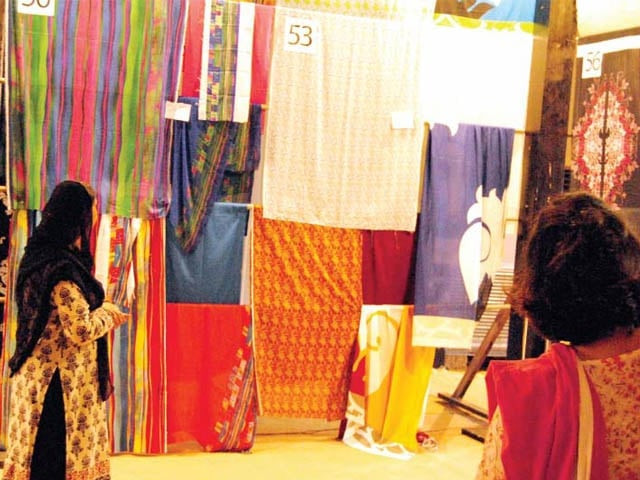
What sets these dupattas apart is the needlework. Some of the most popular embroideries embellishing these dupattas include shadow work, mirror work, bead stitch, simple satin stitch, running stitch and Sindhi stitch. The fabrics usually used in their making include cotton, georgette, chiffon and lawn.
According to Abdul Rahman of Shamsi Palace, a shop located in Dupatta Gali, “These dupattas first started being made in Bahawalpur about 25 years ago, with Multan being the hub from where they used to be sold off to various cities of the country.”
Ali Asghar, a shop assistant at Hijab-ul-Haya, said, “These dupattas come primarily from Bahawalpur. In Karachi, it’s the middlemen who bring in these dupattas in Bolton’s wholesale market. From there, the shopkeepers of Tariq Road collect the pieces ready to be sold to the customers.”
Asghar further informed, “The makers of these dupattas are underprivileged women of the villages, who hardly get Rs50 for each piece they work on. 10 to 20 pieces reach a single home and it takes about three days to finish working on a single dupatta.”
On an average, the prices of Multani and Bahawalpuri dupattas range from Rs180 to Rs700 a piece. Compared to the wage rate of Rs50 a piece, the product provides a fair share for the middlemen.
When asked about the peak season of making these dupattas, Asghar said, “Summer is the peak season when the women in Punjabi villages make these dupattas. During winters, they are busy with the harvesting of cotton crop.”
“It is in Dera Nawab and a couple of other small villages near Bahawalpur where these dupattas are made,” added Rahman.
But with shops nearly empty, who are the buyers of these dupattas? “For a modern woman of the city, dupattas are only used for prayer purposes. But these dupattas are still in demand among the older generation. They are also famous among the Indian customers, who seldom visit the city. Probably finding these cheaper than the ones made in India, they are avid buyers of these dupattas.” said Asghar.
Asghar believes that the art of making these dupattas will fade out owing to the declining demand for the product, “With the new generation that does not fancy wearing them, the art of making them may die,”
Rahman, however, holds a different opinion, “They are still in demand with the older generation of women and this product still goes to the Gulf regions, India, UK and US.”
Published in The Express Tribune, December 10th, 2010.


















COMMENTS
Comments are moderated and generally will be posted if they are on-topic and not abusive.
For more information, please see our Comments FAQ